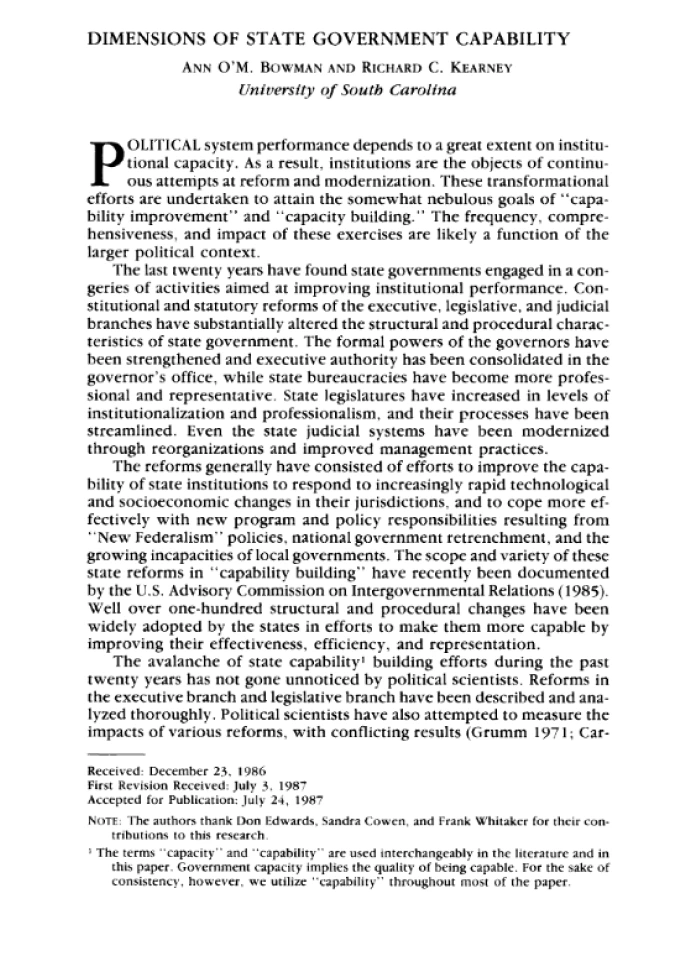This article ventures into the conceptually murky literature on governmental capability and constructs a definition that is put to an empirical test at the state level. Factor analysis produces four dimensions of capability: Staffing and Spending, Accountability and Information Management, Executive Centralization, and Representation. States exhibit varying scores across these factors suggesting that earlier measures that focused on a single dimension distorted the notion of capability. Separate analyses for the legislative and executive branches of state government reveal important intrainstitutional distinctions. A multidimensional cluster analysis results in a regionally coherent grouping of states as to government capability. Regional explanations for legislative capability are somewhat less powerful; for executive capability regionalism is nonexistent.

